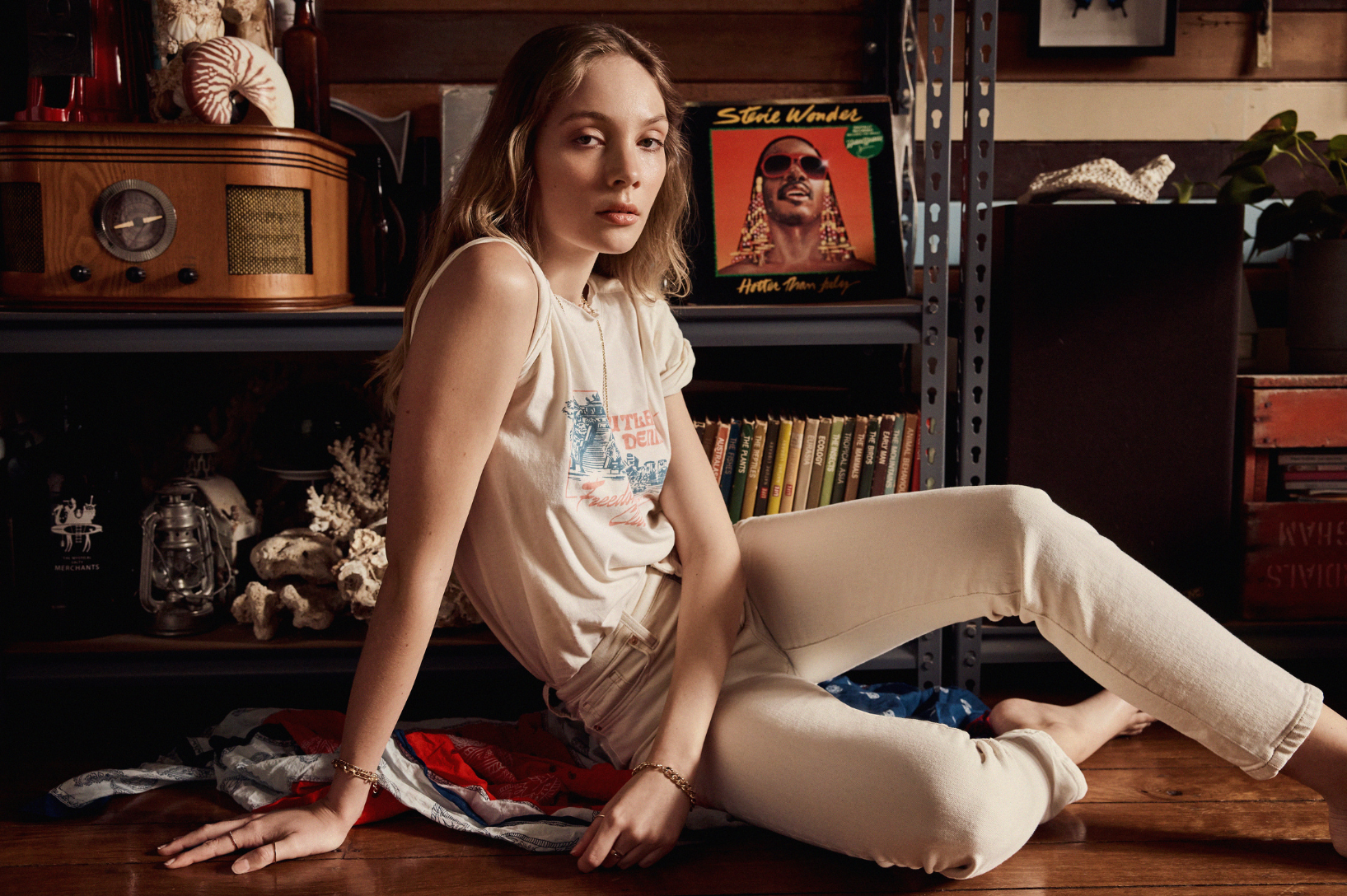Let’s talk about linen. You may only be acquainted with this wonder fabric through your favourite Luna + Sun piece, or because that linen tablecloth your grandma gave you when you moved out of home five years ago is still going strong (regardless of the copious amounts of spilled wine). Despite your constant interaction with this fabric, what you may not know about is its origins and the way in which it was utilised before modern technology. So, we’re here to tell you a bit more about this beautiful, enduring fabric, and how it gets from the soil to your wardrobe.
Linen is derived from the flax crop, a plant that is extremely versatile in use. The seeds of the flax plant can be used for cosmetics, paint, and even floor coverings such as linoleum (mind = blown). As a fabric, linen is extremely versatile and is used for bed and bath items, wallpaper, canvases, and luggage, just to name a few. In the twentieth century, well-dressed men also carried a linen handkerchief in their suit pocket. Perhaps what we best know linen for however, is for clothes—name an item of clothing and you can be sure it can be bought in linen. Linen is popular as a clothing fabric for its temperature regulating abilities as it keeps the wearer cooler in the warmer months and warm in the cooler.
Caring for your Linen
- Hand-wash your linen or wash it separately on a gentle cycle, though always with lukewarm or cold water.
- Do not dry clean, as this can weaken the fibers.
- Avoid exposing your linen to long periods of sunlight. If you opt to tumble dry your linen, use the delicate setting until it is almost dry and let the sunlight finish it off.
- Lie your linen flat to avoid crinkling.
Environmental Impact and Growing Process
With only 100 days between the sowing and harvesting of the flax plant, its growing cycle is short, and each individual crop only blooms for one day. In order to fully utilise the flax plant it is uprooted when harvested, not cut, as the fibers are in the root of the plant as well as the stem. It traditionally requires less water than cotton, though linen requires heavy bleaching to turn the colour from the natural ivory, tan or grey shades to white. The flax crop has a lower environmental impact than cotton, and due to its creation from completely natural materials, it is a completely biodegradable product. Also, because every part of the flax plant can be used in some way, the wastage level is low. These reasons (amongst many others) contribute to linen’s wide utilisation in the ethical fashion world, and are why your favourite ethical fashion brands use it to craft their garments.
What is linen fabric made from?
Because of its strength, linen has become an extremely popular textile choice for clothing; even linen-woven fabrics and textiles made of hemp, cotton, or other fibers are referred to as linen. It is, however, expensive—flax thread is difficult to work with and the plant itself requires immense attention. Kind of like us here at Ethical Made Easy after we’ve watched a David Attenborough doco. You also may have noticed that your own linen clothes do not allow for much stretch, and this is because the flax thread is not elastic. Regardless, and despite the fabric crinkling easy and therefore needing more ironing than other fabrics, linen is cool, breathable, lightweight, and durable.
What is the history of Linen?
It may come as a surprise but linen use actually dates back 36,000 years! A cave in Georgia was discovered to contain dyed flax fibers, which is proof that people utilised wild flax fibres to create fabrics similar to modern-day linen. There is also evidence to support the theory that linen textiles are amongst the oldest – straw, seed, yarn, and fabric fragments dating back to 8000 BC have been found around Swiss lakes. The fabric was also used as a symbol of wealth and light in ancient Egyptian mummification, and white linen was chosen to be worn daily in ancient Egypt because of the extreme heat.
Who knew that linen is one of the oldest known fabrics used for human consumption, and the flax plant from which it comes is so diversely utilised? We certainly didn’t. As a fabric, linen is chosen for its durability and its ability to keep us cool or warm, depending on which we need, though it is a little more expensive because the flax plant requires a lot of tending to. Also, although it creases easily and is not stretchy, it will last its buyer a very long time. It’s also completely biodegradable, which makes it one of the most eco-friendly materials we have at our disposal.
If you’ve been wanting some clothing that will last you a very long time, here are a few brands that love linen as much as we love them:
Bias Basics – use ‘EME’ for 20% off.
Bird & Kite – use ‘GSA325P4W0’ for 10% off
Luna & Sun – use ‘EME’ for 15% off.




